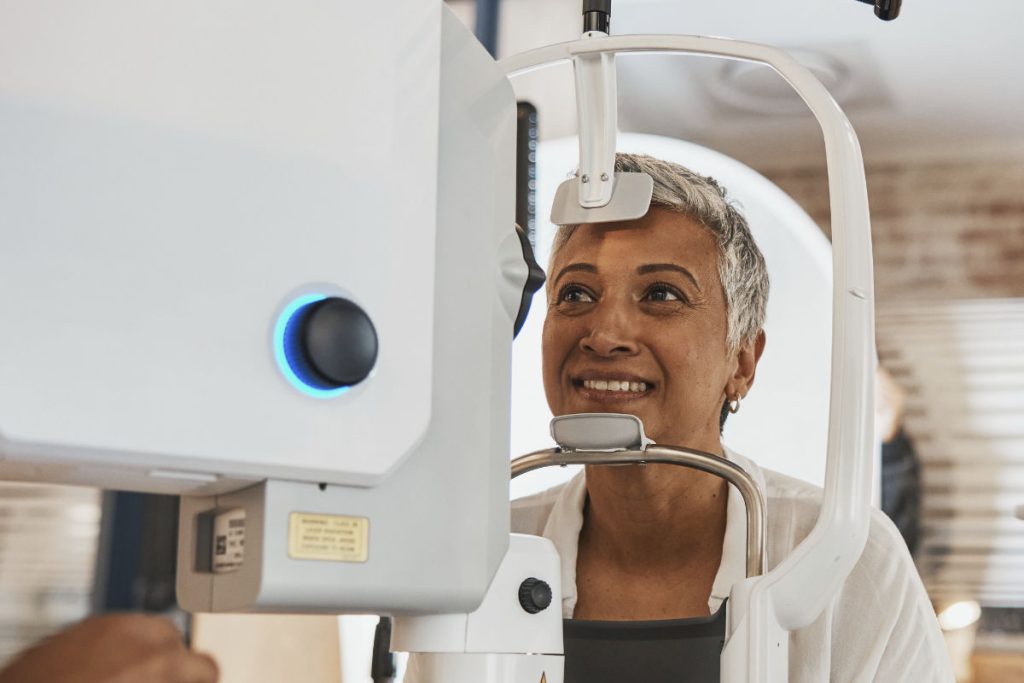
How common is glaucoma?
Glaucoma is the second commonest cause of blindness worldwide.
It is estimated that up to 70 million people suffer from this disease, although not all will go blind. Experts predict that this number will only continue to increase.
In the United States alone, there are approximately 4 million with this disease. The scary thing is that only half know that they suffer from glaucoma.
Around 120,000 Americans are blind as a result of the consequent optic nerve damage. This number is expected to increase, with an estimated 11 million blind worldwide by 2020.
So what exactly is glaucoma?
Glaucoma is the progressive damage to the optic nerve due to the high eye pressure.
Glaucoma cannot be completely cured or stopped; hence it is considered to be a progressive optic neuropathy by the eye specialists.
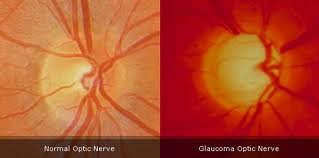
High intraocular pressure can cause damage to the optic nerve, which manifests as ‘cupping’ or excavation of the optic nerve head.
In a normal eye, light entering the eye becomes focused onto the retina.
The retina is the innermost layer of the eye which converts the light into biochemical signals. These signals are then transmitted to the brain through retinal ganglion cells in the optic nerve.
Any damage to the optic nerve affects transmission of these signals and hence cause visual impairment.
The damage to the optic nerve results in progressive loss of field of vision.
Constriction of the visual field occurs gradually, which is why a significant number of glaucoma patients do not even know that they suffer from it. If untreated, tunnel vision occurs.
Eventually even the central vision can become lost, causing blindness.
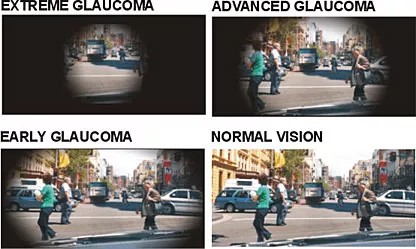
The picture series above demonstrates the varying degrees of visual field loss that can occur due to glaucoma. Those with severe visual field contraction in both eyes are not allowed to drive due to the significant hazards posed to pedestrians and other motorists.
Unfortunately, the visual impairment caused by glaucoma cannot be reversed or recovered. This means that blindness, if it becomes as severe as that, is permanent. Early detection and treatment is therefore vital.
What causes glaucoma?
The culprit here is high eye pressure causing stress to the retinal ganglion cells and individual neurons that make up the optic nerve.
The exact mechanism of damage is unclear though.
The high pressure may cause direct compression on the optic nerve fibres and cause progressive nerve fibre death.
Another theory is that high pressure interferes with the blood supply to the optic nerve, resulting in nerve fibre death from oxygen and nutrient deprivation.
Why does the eye pressure go up?
The eye pressure becomes elevated because aqueous humor (natural fluid in the eye) is unable to drain out of the eye in the normal manner.
Aqueous humor is produced by the ciliary body epithelium and drains out through the trabecular meshwork at the anterior chamber angle.
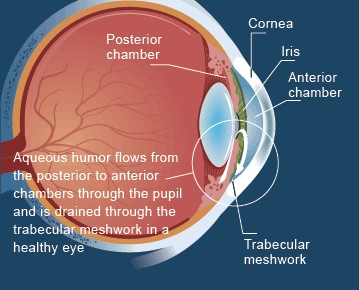
This diagram demonstrates the flow of aqueous humour in the normal eye. Aqueous is produced by the non-pigmented epithelium of the ciliary body. It enters the posterior chamber (the space between the iris and the lens), before flowing through the pupil into the anterior chamber (space between the iris and the cornea). Eventually, it drains out through the trabecular meshwork and canal of Schlemm at the anterior chamber drainage angle.
When aqueous flow out of the eye is blocked, it builds up within the eye, thus causing raised eye pressure.
Blockage to aqueous outflow occur either due to disturbances at the level of the trabecular meshwork (open angle) or due to obstruction at the anterior chamber drainage angle (angle closure).
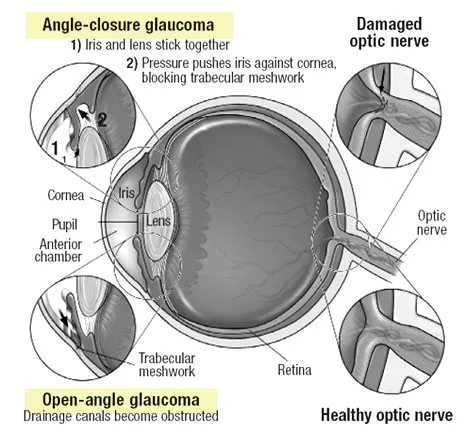
Raised eye pressure develops when aqueous is unable to flow out from the eye. This is the result of either trabecular meshwork clogging / dysfunction, or physical closure of the anterior chamber drainage angle.
What causes the aqueous outflow to become blocked?
The most common reason is age. Your trabecular meshwork cells work less and less well with age, resulting in aqueous humor build-up and elevated eye pressure.
As you grow older, your lens also increases in size and this physically narrows the anterior chamber angle and limits aqeous outflow.
Certain genes increase susceptibility towards developing high eye pressures.This is why you are at increased risk if you have a family history of glaucoma.
Other eye diseases or general health conditions can also affect aqueous drainage.
Predisposing eye conditions include herpes simplex infection of the cornea, cataract and uveitis. Associated general health conditions include diabetes mellitus, high blood pressure and genetic syndromes such as Sturge-Weber syndrome.
And finally, steroids. Steroid medications, whether in skin creams or inhalers or tablets, are notorious for causing high eye pressure from obstructed aqueous outflow.
My eye pressure is high – does it mean I have glaucoma?
Just because you have high eye pressure does not automatically mean that you will develop glaucoma.
In some people, an elevated eye pressure of above 21 mmHg is considered normal for them and damage to the optic nerve does not occur.
This is called ocular hypertension.
If you have ocular hypertension, you should have your eyes monitored at least every 6 to 12 months to check that you are not developing any signs of glaucoma damage, such as visual field defects, thinning of the retinal nerve fibre layer, and changes to the optic disc.
How is glaucoma treated?
The mainstay of treatment is the reduction of eye pressure.
Doing so slows down progression of glaucoma damage, and is vital to preserve visual function and quality of life.
Eye pressure can be reduced with eye drops, laser or surgery.
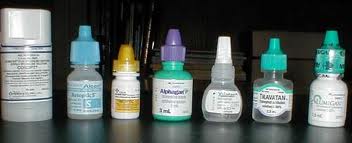
Eye drops are the first line of treatment for the lowering of the intraocular pressure. The four main classes of pressure-lowering drops are: prostaglandin analogs or prostamides, beta blockers, alpha agonists and carbonic anhydrase inhibitors.
In addition, for eyes with closed or narrows, an separate laser or operation is needed to relieve the obstruction and re-open the anterior chamber angle. This is to re-establish the normal aqueous outflow pathway.
Final word on glaucoma
Although glaucoma can be treated, it cannot be cured and it cannot be reversed.
The importance of regular monitoring, early detection and prompt treatment to prevent irreversible visual loss cannot be emphasized enough.
So make sure that you have your eyes examined and eye pressures checked regularly by your eye healthcare professional.
You should also consider improving your diet and lifestyle to reduce your glaucoma risk.
Remember that prevention is always the better option because for glaucoma, there is no cure.
See Related: The SEVEN key risks you must target if you have glaucoma


